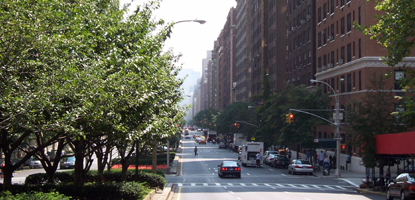Trampled Underfoot
Most New Yorkers think of medians – islands in the middle of busy streets – as not much more than temporary respites from taxi- or bus-induced death. (I’m speaking from experience – I crossed Park Avenue at least twice every school day while attending high school.)
So it stands to reason that as they move (usually quickly) from street corner-to-median-to street corner, most New York pedestrians aren’t thinking much about the grassy patches or flower plantings in and around the medians. And they’re really not thinking about some of the other denizens of medians – the ants.
Biologists like NC State’s Rob Dunn, a native Michigander, are interested in the effects of urban life on smaller creatures, and vice versa. He and colleagues from Columbia University examined ant life in a number of Manhattan medians, including some on major thoroughfares like Broadway and Park Avenue, and found it to be – like New York itself – a melting pot.

The researchers found more than 6,500 ants from 13 different ant species, including three “foreign” ant species. They ranged from forest-dwelling, seed-dispersing ants to polygamous ants. There were also stinging ants native to Japan that were previously thought to have only invaded the Southeastern United States. As Dunn notes, these stinging ants – Asian needle ants, which are sometimes mistaken for fire ants – may be Southerners but they’re not very well-mannered. They can cause severe allergic reactions and are considered a threat to public health.
Three species dominated the scene, though: pavement ants that have taken up in Manhattan’s sidewalk cracks; cornfield ants that feed on the nectar secreted by certain aphids; and, perhaps unsurprising for New York, so-called thief ants that enjoy raiding the spoils of other ant colonies. Many of the ants found are poorly understood, even by ant experts.
Most surprising, perhaps, was the finding that “generalist” ants who enjoy living in the wake of human disturbances were outnumbered by ants with unique traits that use these traits to survive and thrive in the big city.
The study of Broadway’s biodiversity appears in the journal PLoS One and can be viewed here.


